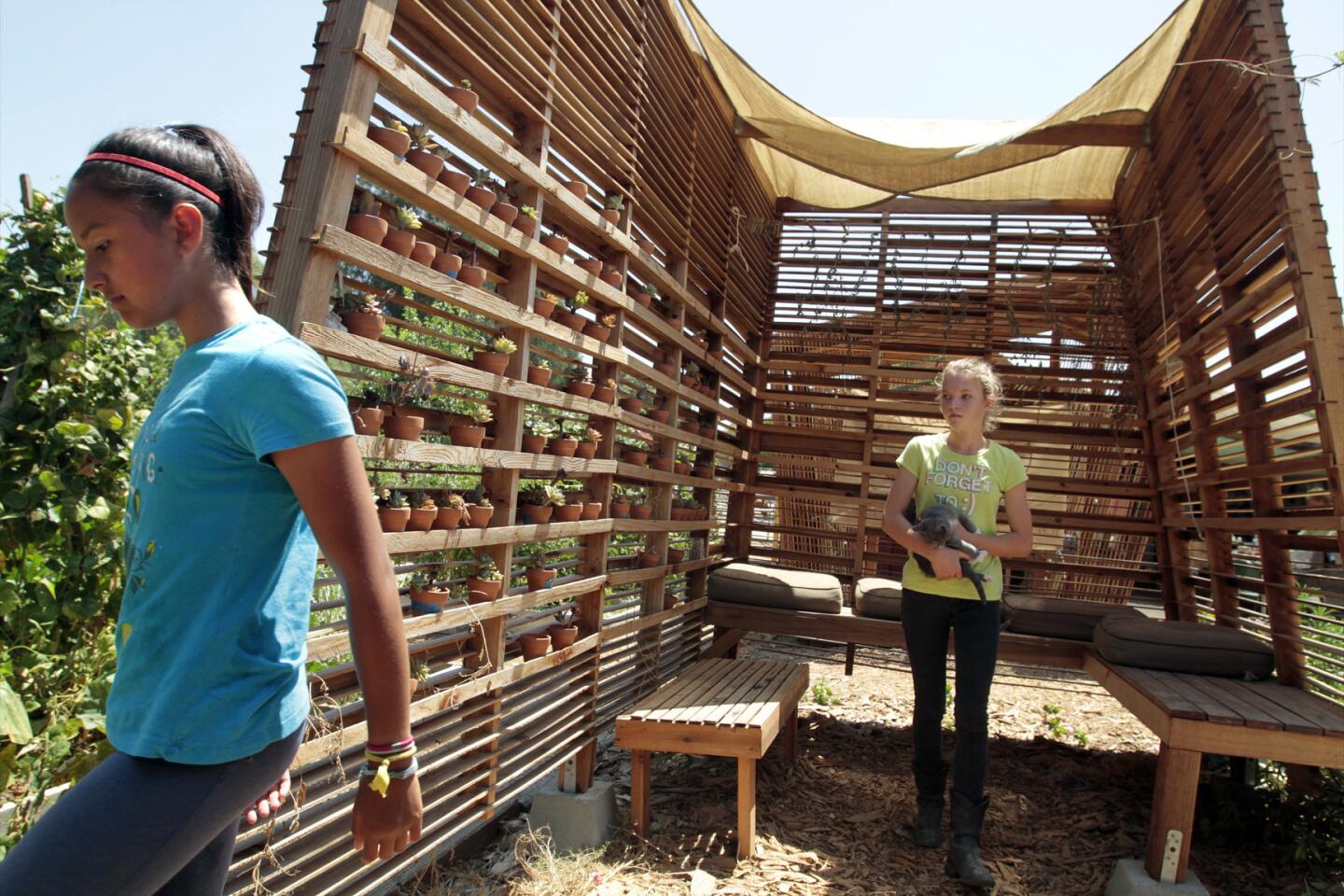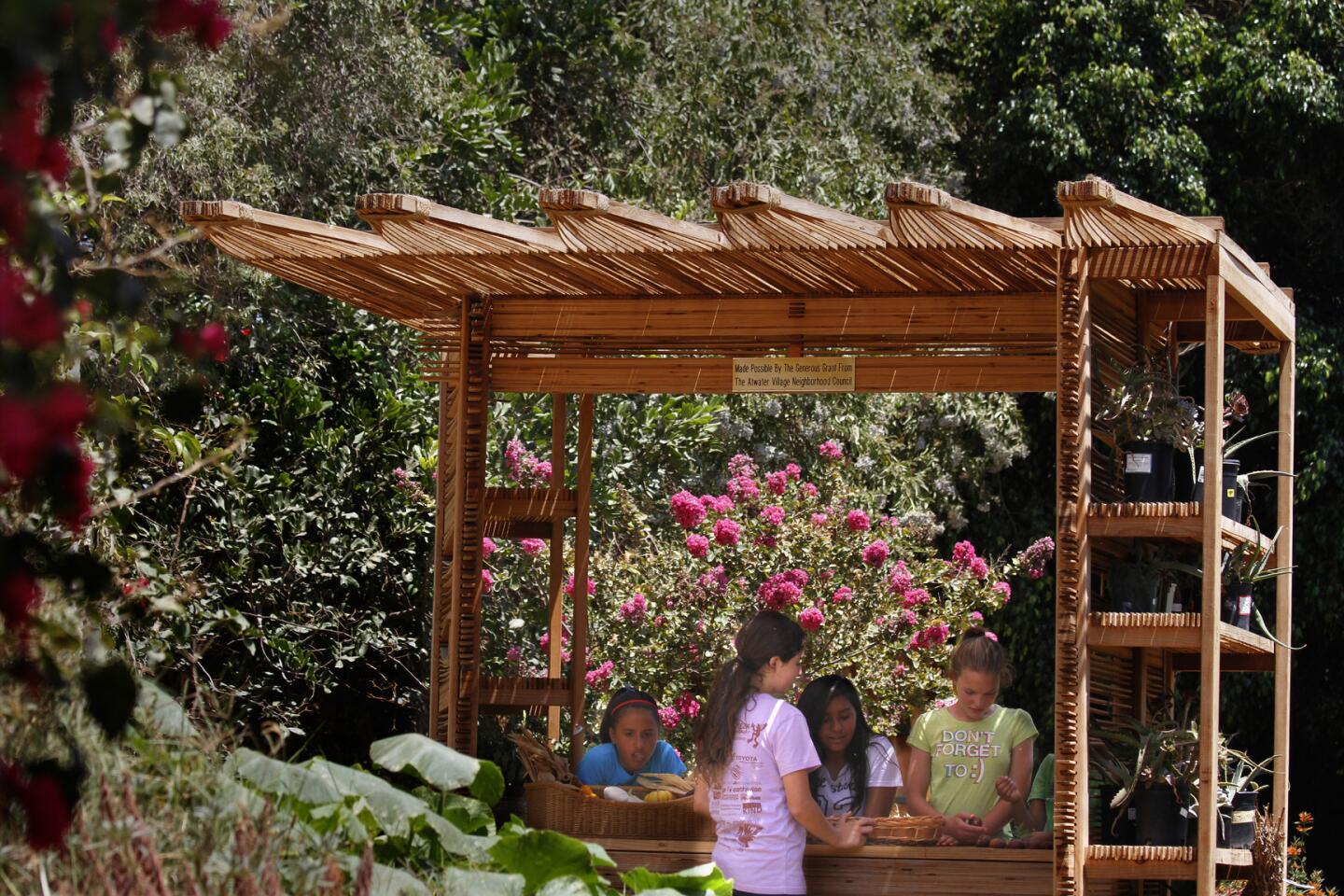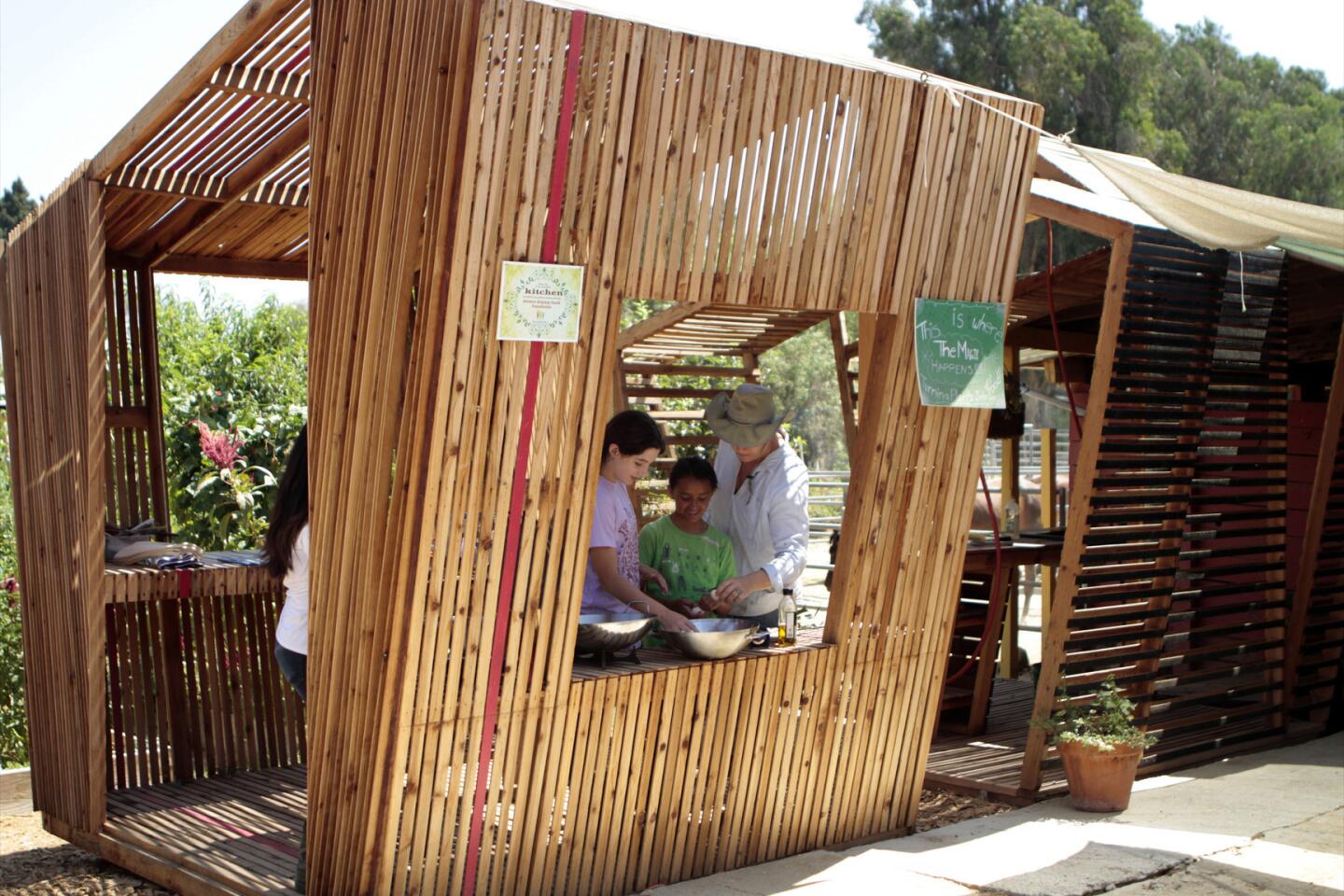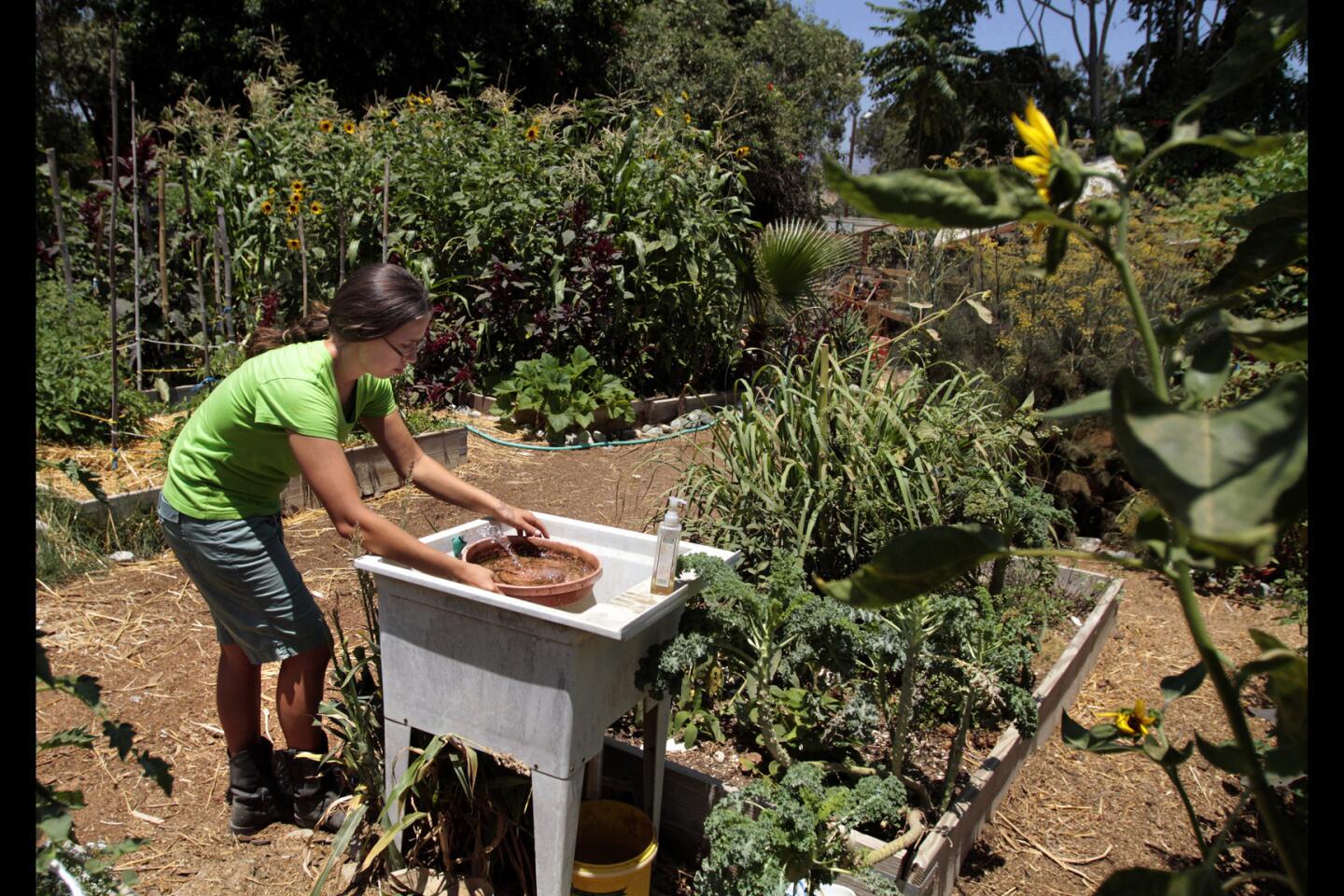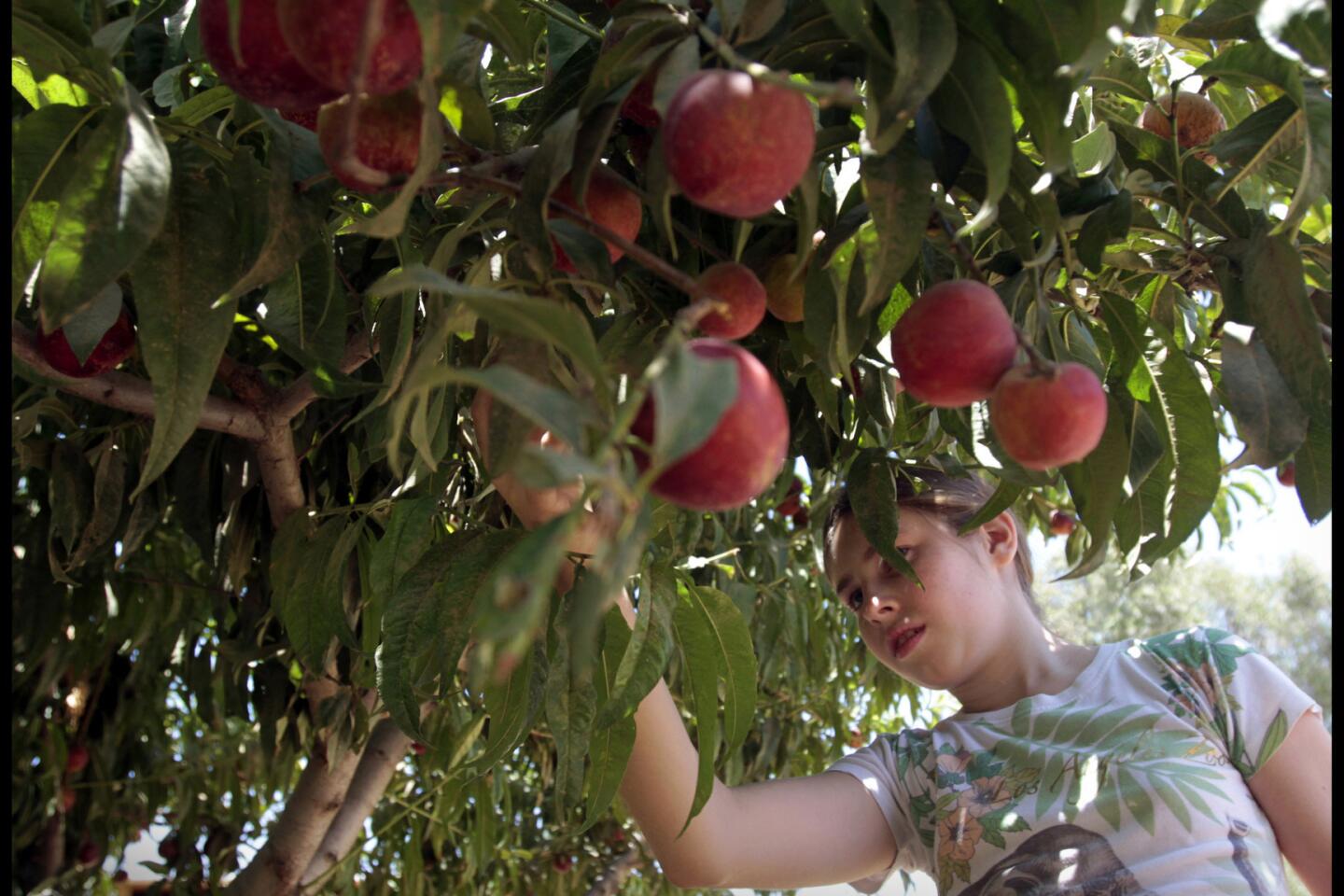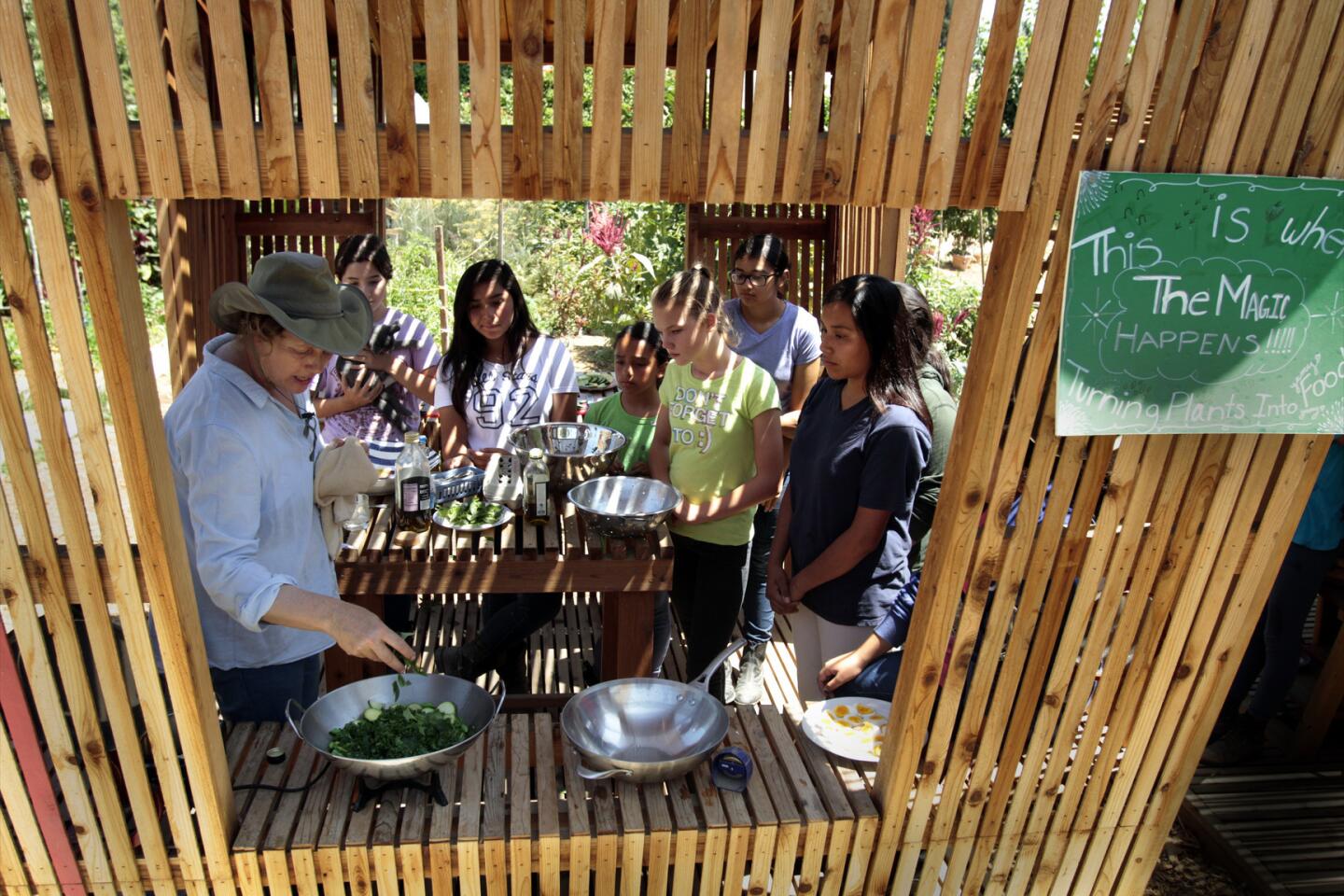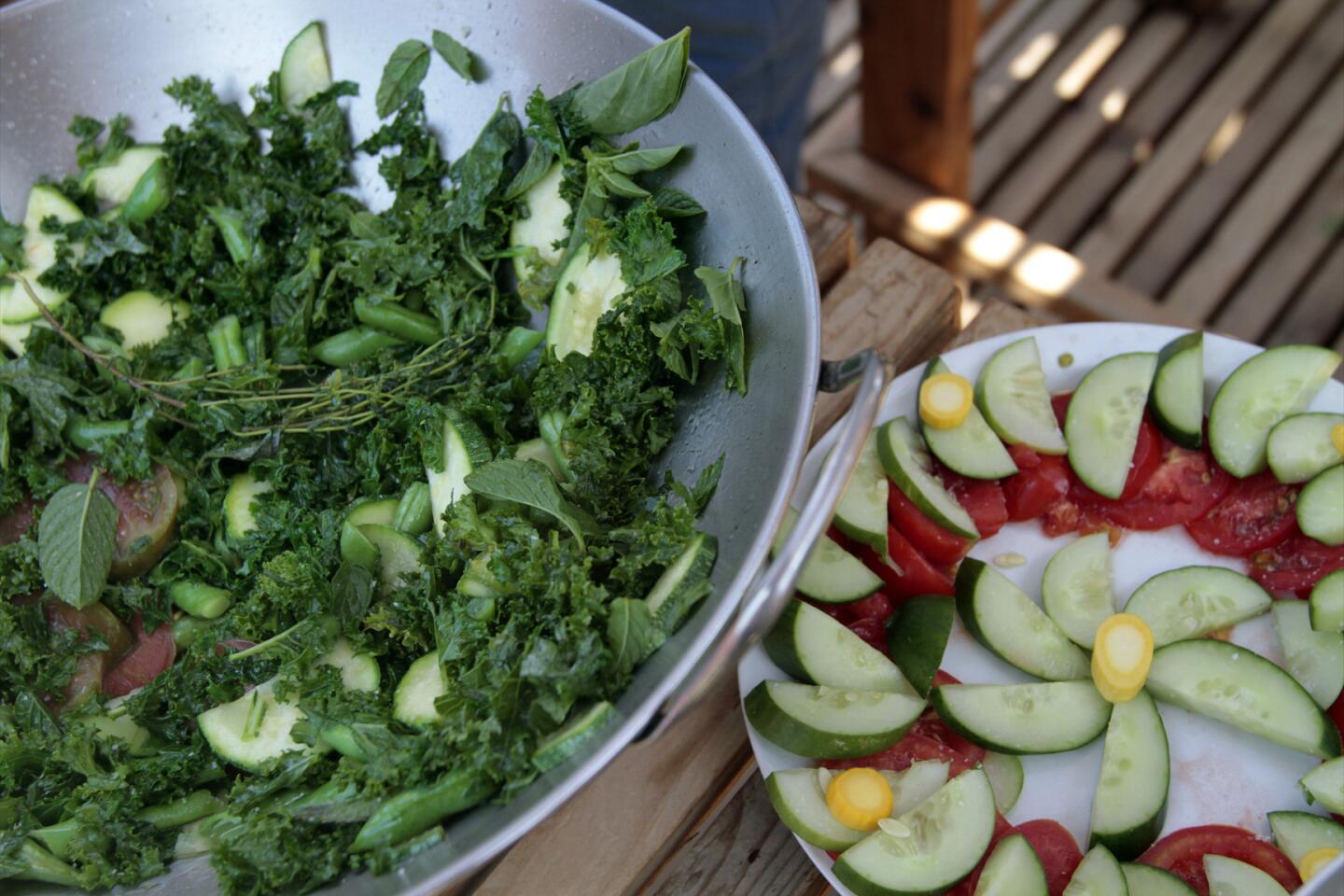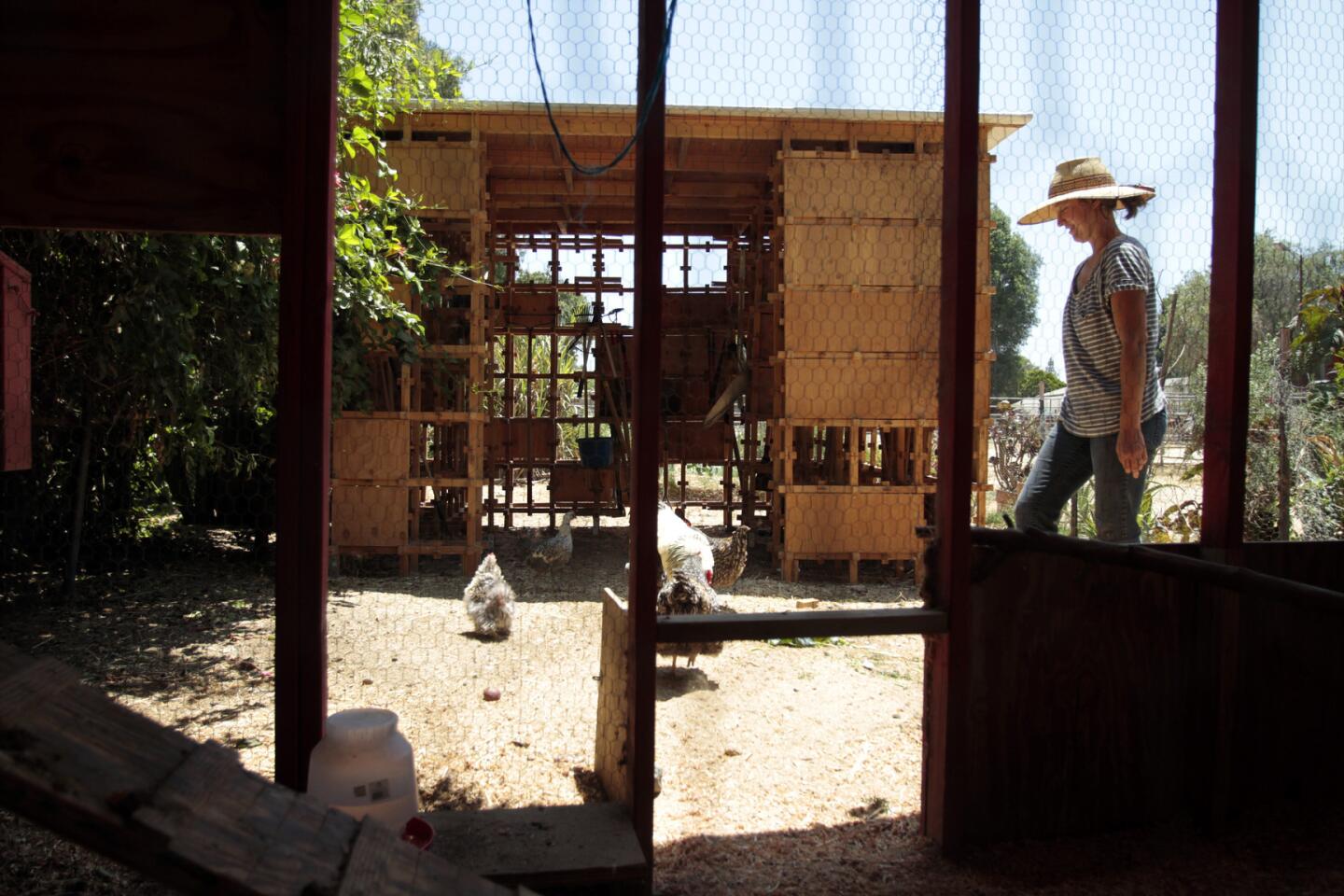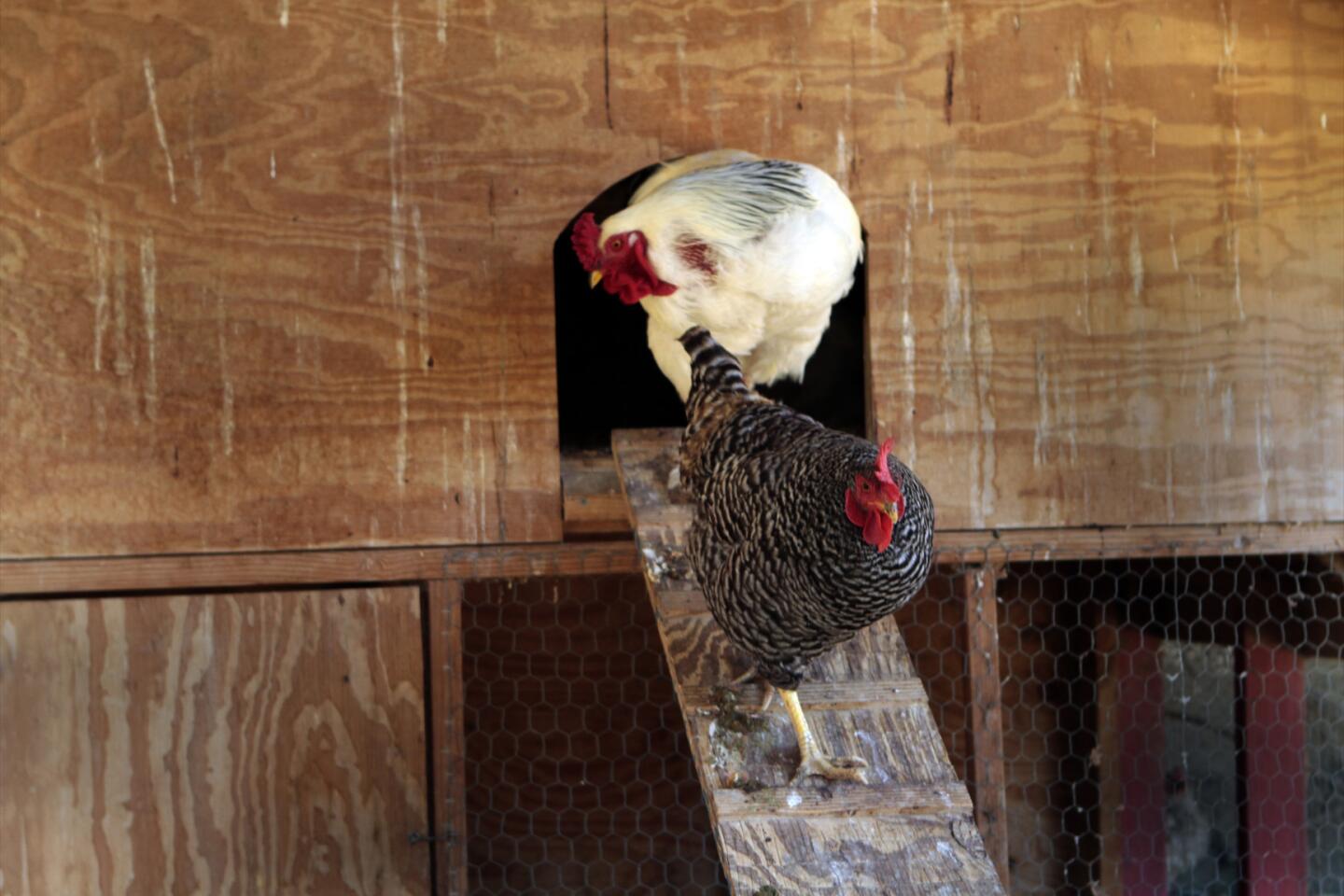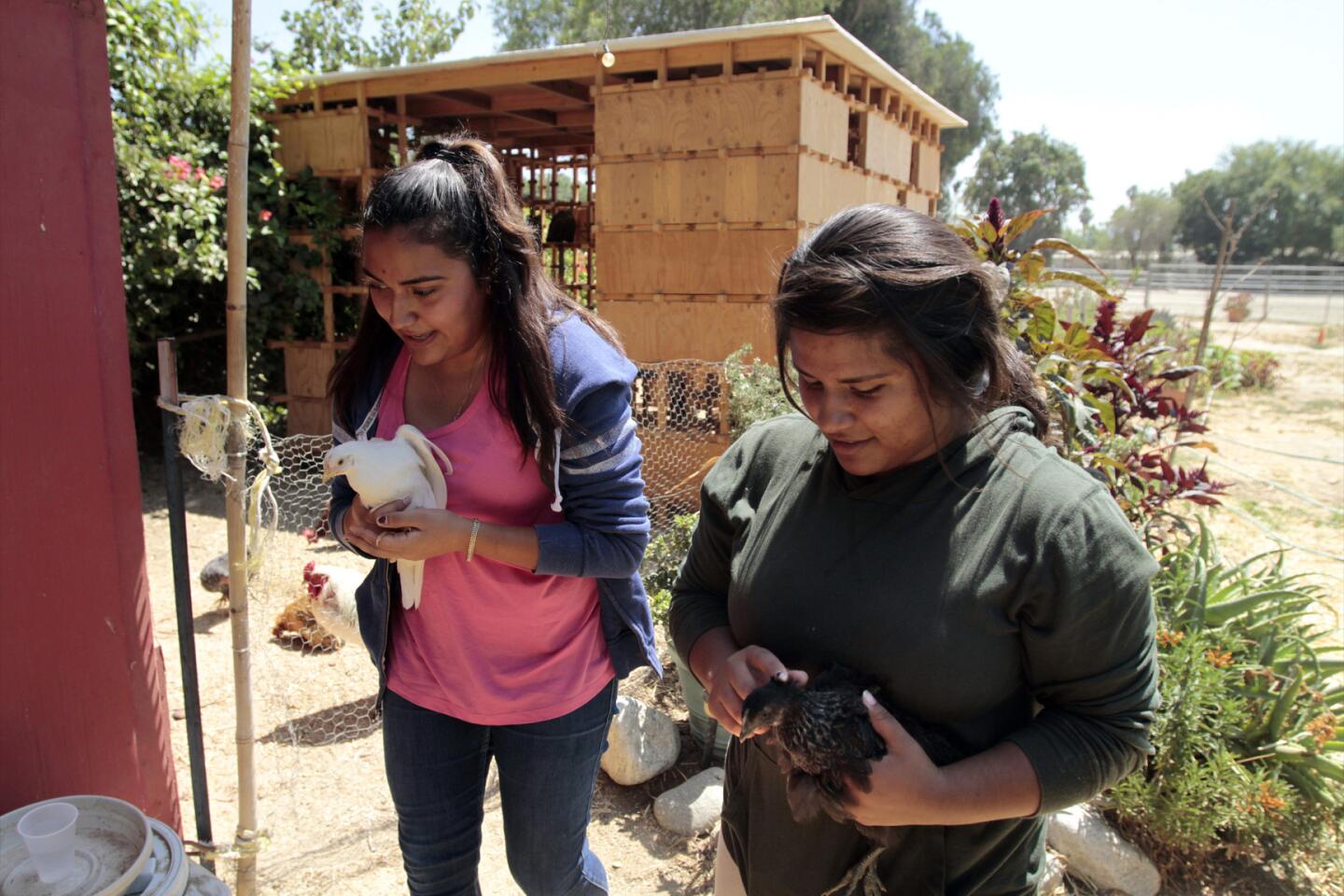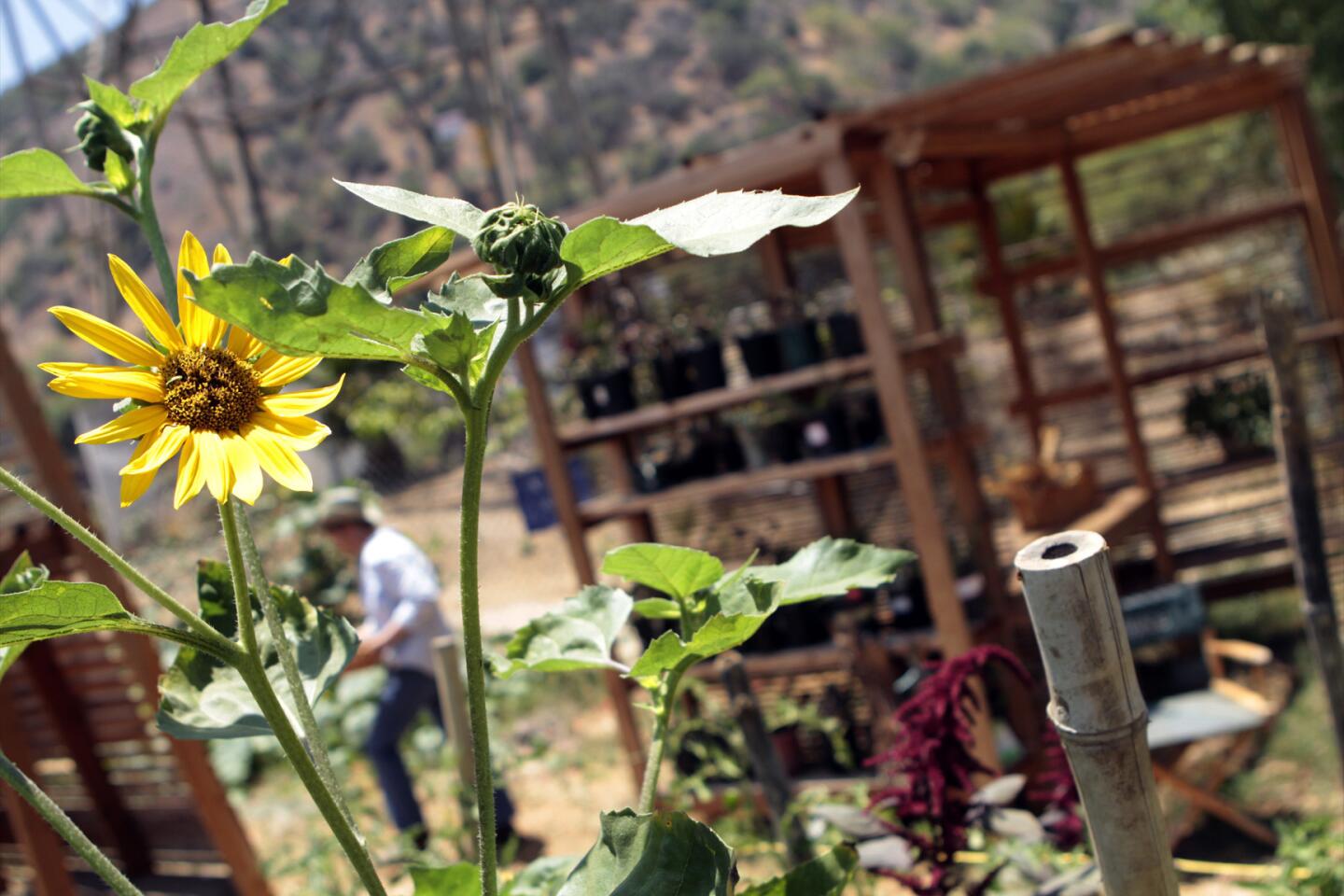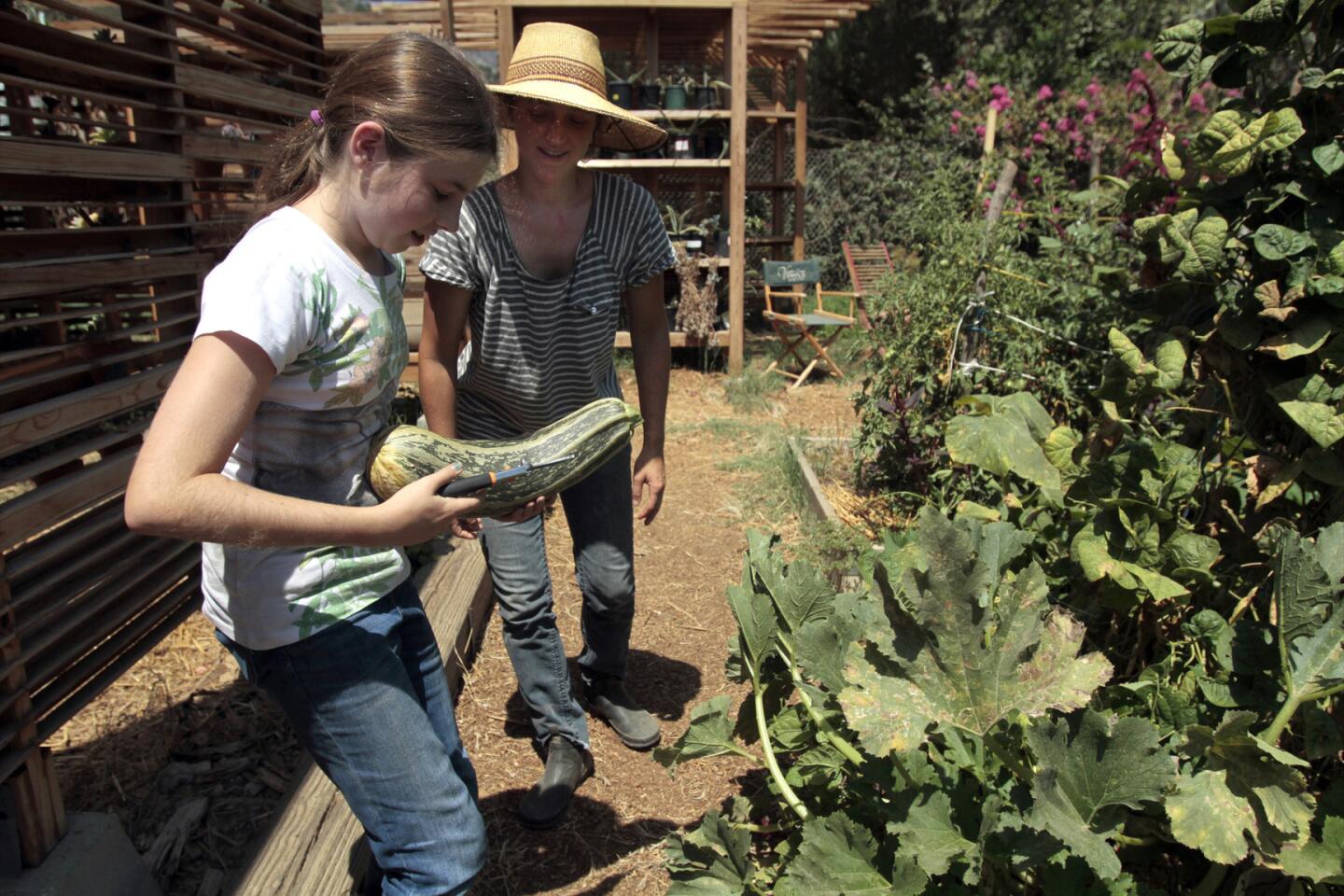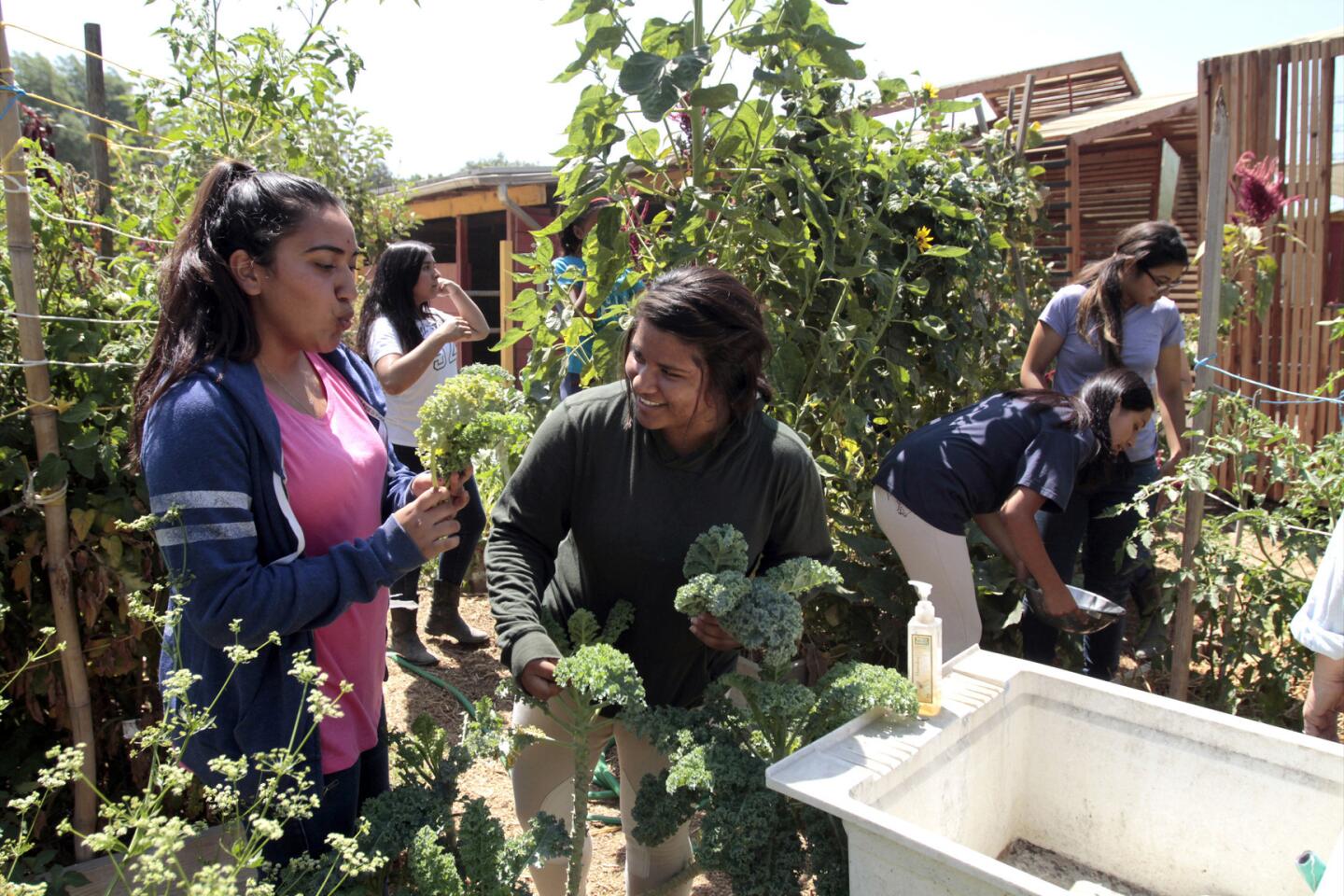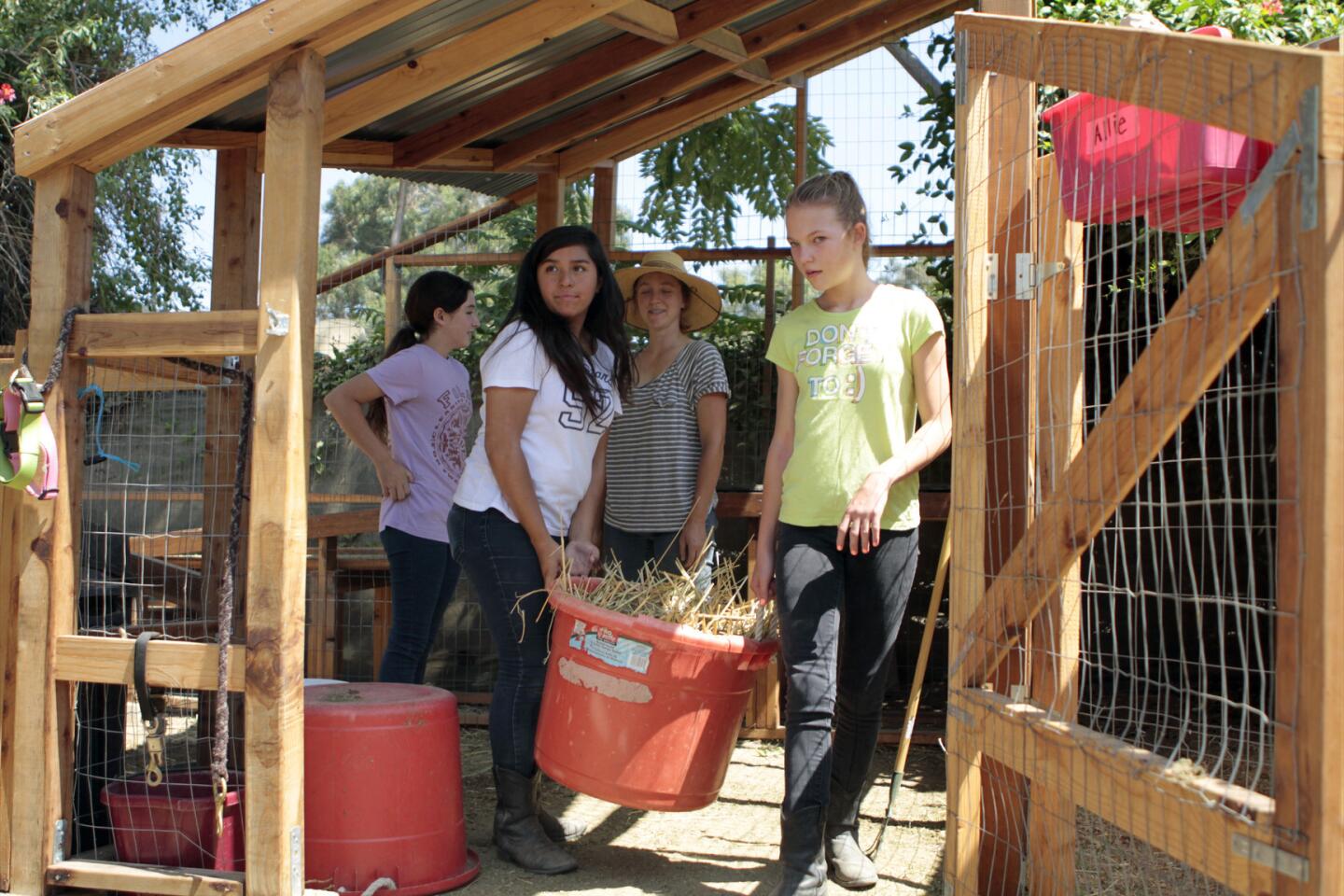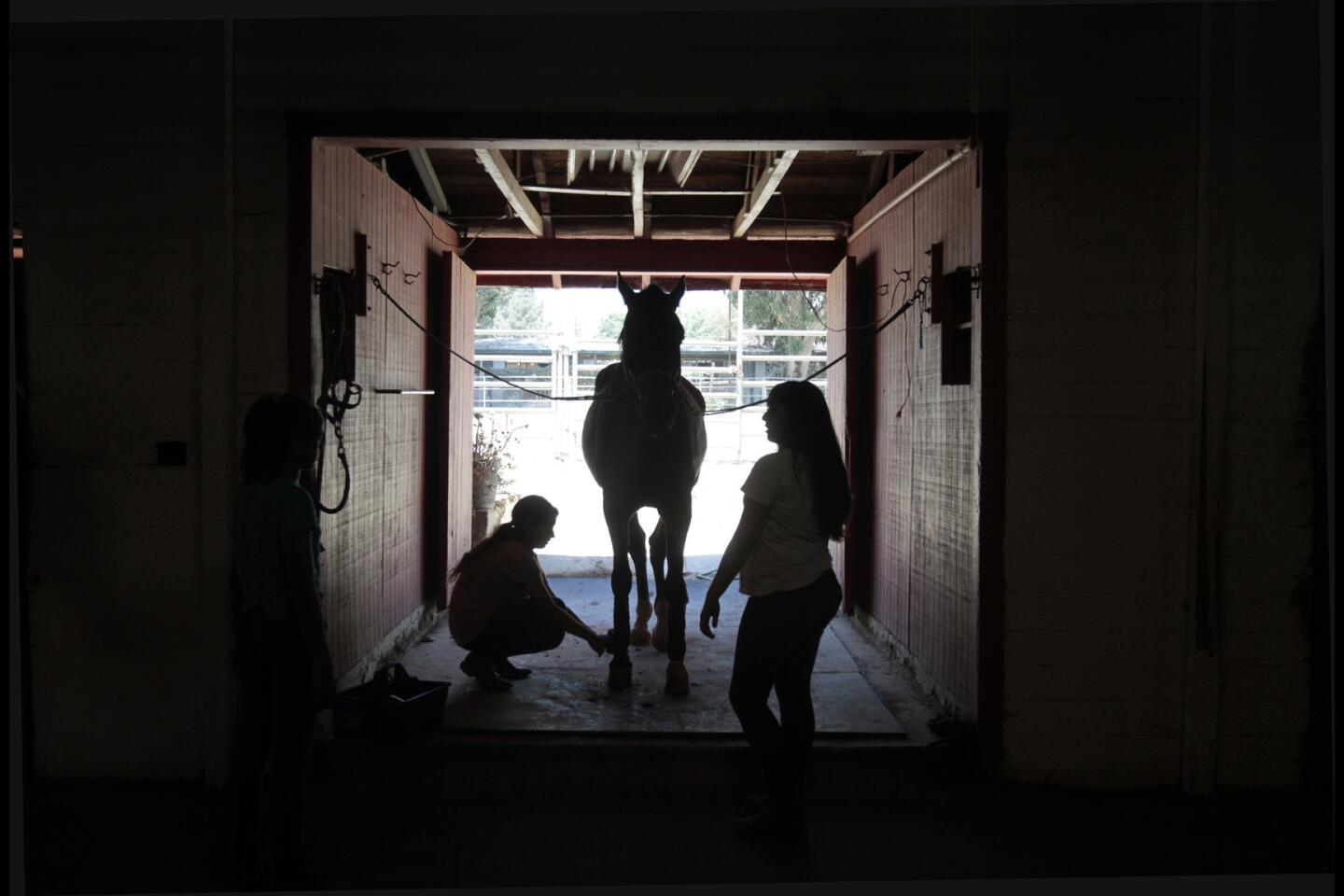ACE Center builds an environment for learning at Taking the Reins
- Share via
One Tuesday morning near the Los Angeles River in Atwater Village, a half-dozen or so girls file into a striking 8-by-10-foot goat pen at Taking the Reins, ready to practice some animal husbandry.
“You don’t need to be gentle with them,” says urban farm manager Colleen Hennessey as she encourages the girls to wrangle the goats and remove their bedding.
The girls, ranging in age from 11 to 18, move in and out of modest but ambitious structures made of lath — thin, flat strips of redwood normally used in lattices or underneath plaster walls — designed and built by Woodbury University’s Architecture + Civic Engagement (ACE) Center students.
Conceptually, the recently completed buildings make up a small village of sorts at Taking the Reins, a nonprofit organization that provides equestrian training and a gardening program to 240 girls from low-income, high-risk neighborhoods in Los Angeles.
“The incredible thing about these new structures is that they give the garden integrity and define us as a program,” says Jane Haven, executive director of Taking the Reins. “There’s a shape now rather than just a dusty environment.”
Despite the early hour, it is hot. Shade is critical, and the new pavilions provide shelter for the girls as they move from the riding rink to gardening and cooking with Hennessey, a former chef.
The eight structures were built over three semesters and include the goat pen, a tool shed, an entry pavilion, two side-by-side outdoor kitchen structures, a produce stand and a seed-saving shed.
In addition to the equestrian program, the girls work with Hennessey, learning all aspects of a “seed-to skillet” program: planting more than 300 vegetables, propagating, tending and cooking what they have grown.
On this Tuesday, they walk through the organic garden looking for ripe vegetables, harvesting green beans, cucumbers and tomatoes along the way.
Back inside the kitchen, the students wash the vegetables in one of the outdoor kitchen structures with a garden hose that hangs from above. Working alongside Hennessey, the students then cut the vegetables in the adjacent food preparation pavilion.
“It’s intimate and relaxing here for them,” Hennessey says from inside the kitchen. “Not only do we cook and garden, but we do a lot of creative writing. The new structures have all these different byproducts. It is more of an experience for the girls now. The structures allow us to try new things.”
Using an electric wok, the girls boil eggs from the chicken coop for a salad.
After they add kale, green beans, soft herbs, lemon juice and tomatoes, Hennessey encourages the girls to think about the food they’d just prepared. “Does it need more lemon?” Hennessey asks. “More olive oil? What would this be yummy with? Take a bite and walk away and let me know.”
“It needs more salt,” the girls say in unison.
“It always needs more salt,” Hennessey responds with a laugh.
Several of the girls say they had never eaten a salad before they started working in the garden. But they have caught on quickly. While preparing lunch, Luz proudly described the mango, pineapple and kale smoothie she made at home recently. “You couldn’t even taste the kale,” she says.
Another girl, Genesis, says she was shy and bullied in middle school before participating in Taking the Reins. Her experience in the garden has taught her to be patient and calm. “You want to yank the carrots out. The corn and tomatoes too. But you have to wait until they are ready.”
Genesis’ response to the environment is precisely what motivates the ACE Center at Woodbury University, which has been doing civic-minded work with nonprofits since 2011.
“These structures mesh with what we’re trying to do at ACE,” says Jeanine Centuori, director of the ACE Center. “Architecture as a catalyst for change. We’re looking at both design and culture.”
After building cabins for the nonprofit Shadow Hills Equestrian Center, Centuori wanted the students to move on to something different. “We were thinking about lath structures that people use to make garden structures,” she says. “We saw their architectural potential.”
Inexpensive lath may be considered unrefined as a building material, but installed here, the wood strips take on a luxurious effect as the Minimalist buildings establish a community alongside a dusty barn, riding rink and organic garden.
The structures are adaptable and open-ended with see-through strips and large cutouts that allow you to look through the buildings and into the garden. “We wanted every structure be an economical, light-filled space,” says Elizabeth Timme, a Woodbury faculty member.
Can small structures make a difference or, in a broader sense, can architecture itself bring about change? Woodbury instructor Sonny Ward thinks so.
“These aren’t big buildings, but they are very rewarding,” Ward says. “We have found that our small-scale projects are as much about the relationships, attention, design process and the empowerment of both the students and our clients along the way as they are about the built form itself.”
Follow me on Twitter: @lisaboone19
